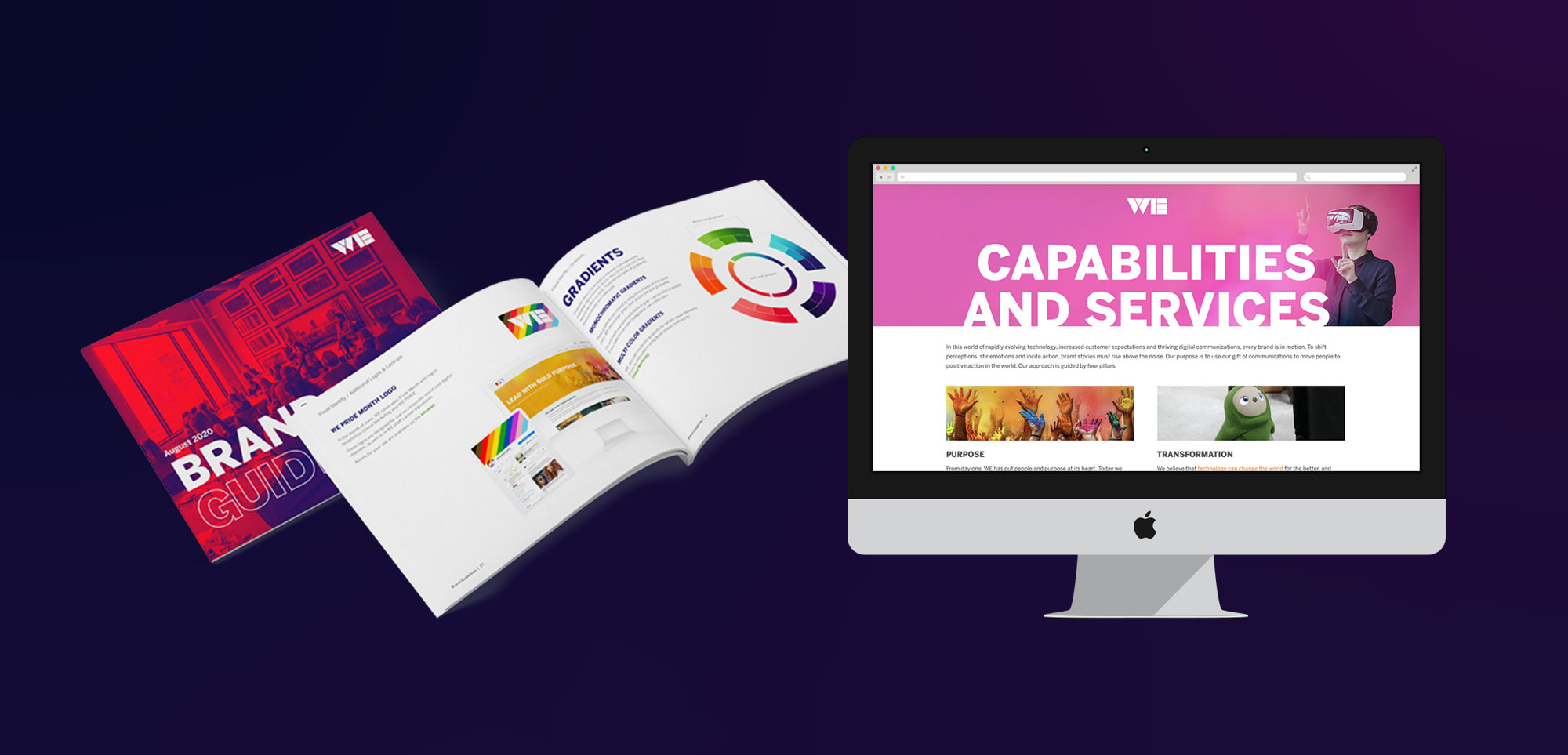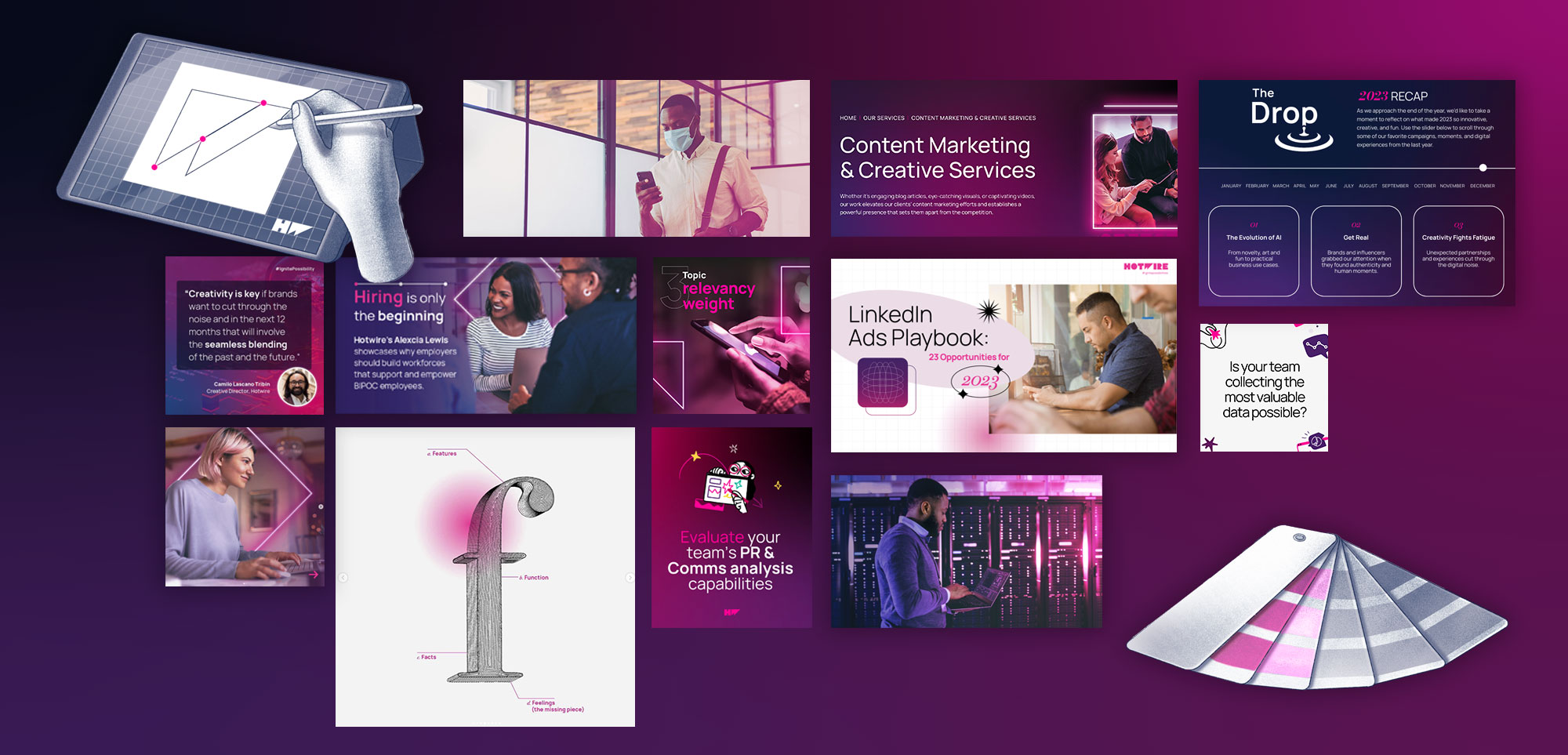As marketing professionals, we’re often immersed in our own narratives. In this blog post, I explain how it’s crucial to step back and consider how your brand is perceived by those you aim to serve. This shift in perspective can uncover valuable insights that shape not only our branding strategies but also our approach to storytelling.
Telling your brand story
Effective communication is not just about conveying information; it’s about crafting narratives that resonate deeply with your audience.
Storytelling allows brands to communicate their values, evoke emotions, and inspire action. But the art of storytelling is nuanced and there is no one-sized-fits-all approach.
I have many years of experience crafting narratives and building brand extensions for tech-focused industries, as well as the three agencies I’ve worked at.
Before we get into examples, it’s important to note that different approaches are required compared to consumer-focused brands. In tech, the narrative often revolves around innovation, problem-solving, and the potential for transformative change. You can guess that while storytelling is an aspect of that, a photo of a bunch of campers probably won’t work for a Tech & SaaS B2B agency.
Enter my first rebrand in my career:


When we rebranded The PMG Co, we built the brand to ensure we make it clear we were telling stories for Tech & B2B while converting our target audience. We brought in appropriate brand colors (and named them SasSy blue) to replace the dark gray. The rebrand gave us immediate market interest, and you can read more about that rebrand here.
Rebrands vs. brand refresh
You may be asking, should you undergo a full rebrand or opt for a brand refresh? While both approaches aim to revitalize a brand’s identity and relevance, they differ significantly in scope and impact.
A rebrand involves a comprehensive overhaul of a brand’s identity, encompassing everything from its visual elements to its messaging and positioning. It signals a significant shift in direction, often driven by changes in the market, company values, or target audience. For PMG, it was necessary we underwent a shift to reach our ideal clients.
Rebrands are ambitious undertakings that require careful planning, resources, and stakeholder buy-in. They are best suited for agencies seeking to redefine their identity, break into new markets, or distance themselves from past perceptions.
On the other hand, a brand refresh involves making subtle updates to an existing brand identity without completely reinventing it. While I worked at WE Communications, our brand was also in need of a change, but we had market presence that we didn’t want to lose. So our Global Marketing team made a plan to strategically add in elements and refresh it to carry us forward into our 5 year plan. You can read more about that rebrand here.

Brand refreshes are a strategic evolution, aimed at modernizing the brand while retaining its core essence.
In my time at Hotwire, we continued to evolve our brand and made small changes over time. These updates allowed our designers to feel like we we’re constantly improving our global narrative.
Brand refreshes are ideal for agencies looking to stay relevant in a changing landscape, update outdated elements, or realign with shifting consumer preferences. They offer a more cost-effective and less disruptive alternative to full rebrands while still delivering tangible benefits.
By embracing the perspective of our potential clients and tailoring our approach to branding accordingly, we can create brands that not only captivate but also resonate deeply. Remember that even seemingly subtle changes to your brand can yield transformative results, underscoring the importance of meticulous attention to detail in every aspect of branding.

Before embarking on either a rebrand or a brand refresh, agencies should ask themselves five crucial questions:
- What is your purpose behind the rebrand or refresh? Are you aiming to attract new clients, differentiate yourself from competitors, or revitalize your brand’s image? Define clear goals to guide the entire process and ensure alignment with your agency’s strategic priorities.
- What is your brand’s current perception? Understand how your brand is currently perceived in the market. Conduct thorough market research, gather feedback from your clients and stakeholders, and analyze industry trends. Doing all these things will provide valuable insights into areas where your brand may need improvement or realignment.
- How will a refresh or rebrand impact your target audience? Consider the potential impact. Will it resonate with their needs, preferences, and aspirations? Ensure the changes you make are meaningful and relevant to your audience to foster positive engagement and maintain loyalty.
- What is your timeline and budget? Establishing realistic timelines and budgets is essential for managing expectations and ensuring a smooth implementation process. Consider factors such as stakeholder approvals, design iterations, and rollout strategies to create a realistic roadmap for your rebrand or refresh project.
- Do you have the necessary resources and expertise? Undertaking a rebrand or refresh requires dedicated resources, expertise, and time. Assess whether you have the internal capabilities to execute the project effectively or if you need support from branding experts, designers, or marketing consultants.
If you are interested in working together for your brand refresh or overhaul project, get in touch with me!





